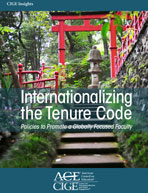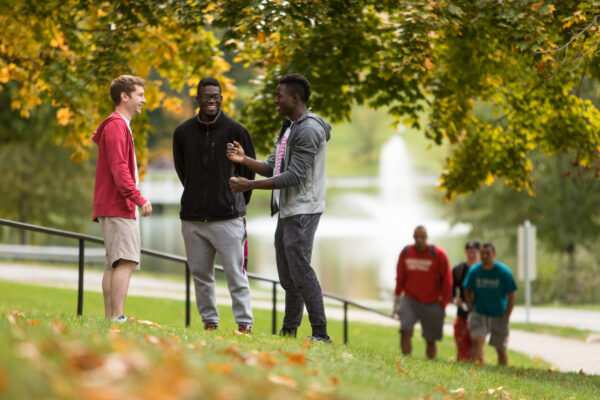Patti McGill Peterson argues that recruiting students from abroad alone isn’t enough to internationalize a campus.
Imagine listening to the viola section play Beethoven’s Ninth by itself.
It’s not the same, because the viola’s notes are only one part of a more beautiful, harmonious whole.
We have to think about on-campus internationalization the same way. It takes more than one element to change the culture of a campus into something global.
To be frank, higher education leaders too often look to the recruitment of students from abroad as the single cure-all to create an internationalized campus. While that is one of several steps institutions can take, it’s not enough on its own.
By only recruiting students from abroad, institutions are missing a vital part of campus internationalization: The experiences and preparation of U.S. students.
In the meantime, without support systems in place, campuses run the risk of setting up international students for failure. Although their presence does mean an inflow of new capital, there must also be outflow of support—whether it’s making sure they know where to go once they reach the airport, helping with paperwork, or the larger issue of helping them orient themselves to a completely new campus. (One of our colleague associations, NAFSA, has a great collection of resources on this).
What does true internationalization look like?
There are a number of ways to ensure that a college or university offers global education. One important way is by infusing the curriculum, no matter what discipline or major, with student learning outcomes based on global competencies, from speaking a foreign language to showing cultural understanding. (Watch for upcoming editions of our Internationalization in Action series, which will feature some great institutional examples of student learning outcomes.)
Learning outcomes do not depend solely on the curriculum. The co-curricular side of the house has much to contribute. This involves much more than the obligatory international square dance—it’s about cross-cultural programming that can create shared space between programs that highlight opportunities to understand both the multicultural diversity of the United States and the cultures of foreign countries.
So what does that look like?
Here’s a simple idea that is very effective: One of the top assets in this work of truly changing the campus culture is the student body. International students bring so much to the table, as do students who have returned from studying abroad. Given the number of organized forums, discussion groups and panels on college campuses, there are plenty of opportunities to involve the view from abroad.
Just imagine the perspective a student from China brings to a conversation about democracy. Imagine what a student fresh from a semester in Russia might have to bring to a conversation about the end of the Cold War. What might a student from Saudi Arabia have to offer to a forum on women’s rights? Beyond the realm of the humanities, someone who has interned at an engineering firm in India might have much to say to a group of students discussing their job options after graduation. (The National Science Foundation sponsors one of several efforts geared toward increasing STEM engagement abroad).
The point is, when globally entrenched students share publicly what they’ve learned from their experiences—and not necessarily in venues where it’s expected—they create first-hand links for their peers. Conversations can grow into more learning, and learning into further engagement. As educators well know, the interest sparked from one connection can lead a growing mind down exciting new paths.
Of course, there are many more strategies for comprehensive internationalization, but the bottom line is that it takes a whole campus and a great deal of thought and planning to create an optimized environment for global learning.
All this isn’t to argue that bringing in students from abroad is an unimportant step—the experiences and viewpoints they bring to the table are incredibly useful and can add a great deal. However, the viola alone doesn’t make a symphony.
If you have any questions or comments about this blog post, please contact us.

